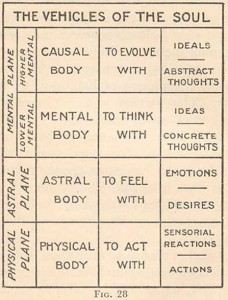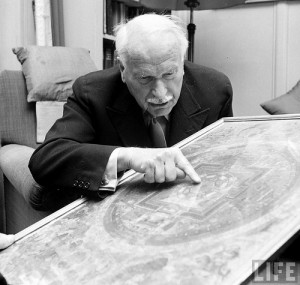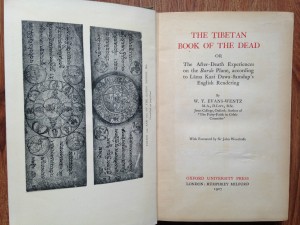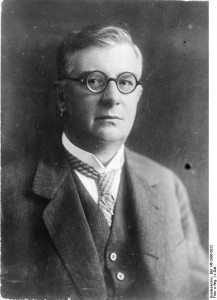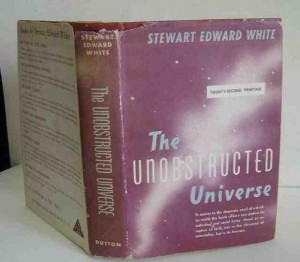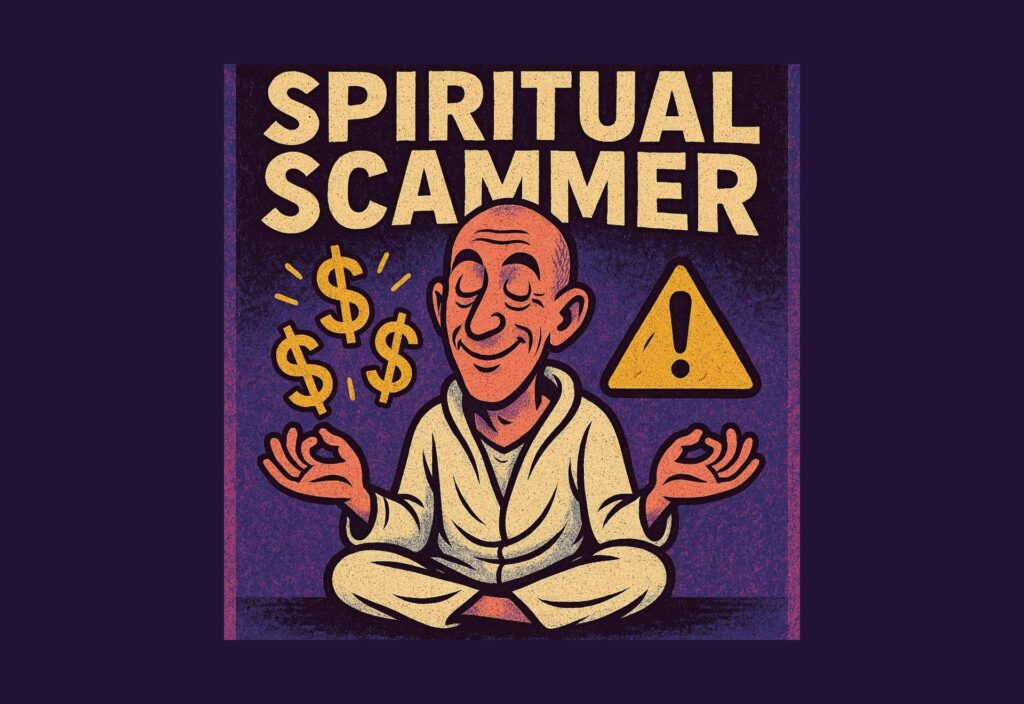Imagine life as the ultimate game, where the formless explores forms and the timeless experiences time. Imagine the infinite pretending to be finite. But this is a game of forgetfulness. It’s designed to make us forget we’re playing a game; to mistake our role in the game for the only life we’ll ever have. What would it be like to wake up in that game? To realize, or remember, that we’re only sojourning through this world of temporary wonders, that we are not thought, we are what watches thought. You are not your body, your mind, your emotions, your mind, all parts of the game, you are what plays the game. The Chinese classic 太乙金華宗旨, The Secret of the Golden Flower, is about how to wake up in the game, or as Cleary translates it “turning around the light.” The light is consciousness. Light is always leaking in the vortex that is creation. Our consciousness pours out of us chasing after objects, and objectified people, we desire or fear. We are tossed by our emotions like a rowboat in rough sea. Everything seems more real to us than ourselves, and more important to us. For many any distraction is preferable to sitting quietly in self-reflection. What does turning around the light mean? Focusing on the source of consciousness. An exercise favored by the Hindu sage Sri Ramana Maharshi who advised students to ask themselves “Who am I?” For example: am I my body. But I have these thoughts. So no, I’m not merely a body. Am I my thoughts? No, those are always changing. At the end of this exercise the meditator arrives the same experience described by The Secret of the Golden Flower: pure formless timeless consciousness. In The Secret of the Golden Flower the lower soul is that part of us which creates and sustains body and mind. Thinking, we are told, is the breathing of the lower soul. The Secret of the Golden Flower tells us that the lower soul is attracted to death. We certainly see all around us a world in love with death. From religious zealots beheading innocents to kids playing games that allow them to kill millions, from films that glorify the kinetic details of carnage to endless TV shows about murders real and imagined, fascination with death is the common denominator. Most of us live our lives conscious of only the lower soul. But we also have another soul, or rather, the part of our soul that is watching, having never become involved in the minutiae of physical organs and mental tricks like language. The higher soul, we are told by The Secret of the Golden Flower, loves life. Most of us have epiphanies when our minds seem to open to sky-like consciousness and a sense of deep appreciation overcomes us. Those moments when we love life give us glimpses of our true nature. In the Rig Veda this is signified by a profound but simple symbol. “Two birds on a branch. One bird eats, the other watches.” The bird absorbed in eating is the lower soul. The bird watching is the higher. But they are not really separate. They are one soul, only that being so focused on incarnation the soul forgets itself. The game of life seems so real, so dire, so insistent, the lower soul forgets about its higher powers. Paul Brunton called this higher soul “the overself.” The popular term in the American New Age movement has been “the higher self.” Other cultural representations of this mystery make more complicated divisions than simply higher and lower. Plato described the soul in three parts. Among the Neoplatonists the anatomy of the soul included more, becoming a ladder from the perfection of the unknowable source of all beauty, harmony, truth and being all the way down to the physical matter souls use to build forms. The ancient Egyptians also divided the soul into more than three parts. Theosophy, with seven “vehicles of the soul” helped popularize the idea of the astral body at the turn of the 20th century, offering their own diagram of the different parts of a soul.
Theosophical Society helpful diagram by Jinarajadasa CARL JUNG, RICHARD WILHELM AND THE PERILS OF TRANSLATION
The Secret of the Golden Flower is not the first spiritual classic from Asia to suffer rough translation. The Tibetan Book of the Dead was in part a concoction of Evans-Wentz who gave the impression that he had translated a singular holy book, when in fact there are many Tibetan books devoted to navigating the bardos. In 2006 Oxford University Press published The Hidden History of the Tibetan Book of the Dead where Brian Cueavas revealed that Evans-Wentz wasn’t above “channeling” his own content to fill in what he thought might be missing. Oxford had published Evans-Wentz in the first place, in 1927, and with their imprimatur his translation became the standard on which many others, psychedelic, scholarly, and popular, were based.
Richard Wilhelm published his German translation of The Secret of the Golden Flower in 1923, with an introduction by Carl Jung. The English translation of Wilhelm’s work by Carl Baynes followed in 1931. Wilhelm’s translation is beautiful and greatly influenced Jung and generations of readers, however it suffers from serious inaccuracies detailed by Thomas Cleary in his more scholarly 1993 translation. Here is what Carl Jung had to say about Wilhelm: “I first met Richard Wilhelm at Count Keyserling’s during a meeting of the “School of Wisdom” in Darmstadt. That was in the early twenties. In 1923 we invited him to Zurich and he spoke on the I Ching (or Yi Jing) at the Psychology Club.
Even before meeting him I had been interested in Oriental philosophy, and around 1920 had begun experimenting with the I Ching. One summer in Bollingen I resolved to make an all-out attack on the riddle of this book. Instead of traditional stalks of yarrow required by the classical method, I cut myself a bunch of reeds. I would sit for hours on the ground beneath the hundred-year-old pear tree, the I Ching beside me, practicing the technique by referring the resultant oracles to one another in an interplay of questions and answers. All sorts of undeniably remarkable results emerged-meaningful connections with my own thought processes which I could not explain to myself. The only subjective intervention in this experiment consists in the experimenter’s arbitrarily – that is, without counting-dividing up the bundle of forty-nine stalks at a single swoop. He does not know how many stalks are contained in each bundle, and yet the result depends upon their numerical relationship. All other manipulations proceed mechanically and leave no room for interference by the will. If a psychic causal connection is present at all, it can only consist in the chance division of the bundle (or, in the other method, the chance fall of the coins). During the whole of those summer holidays I was preoccupied with the question: Are the I Ching’s answers meaningful or not? If they are, how does the connection between the psychic and the physical sequence of events come about? Time and again I encountered amazing coincidences which seemed to suggest the idea of an acausal parallelism (a synchronicity, as I later called it). So fascinated was I by these experiments that I altogether forgot to take notes, which I afterward greatly regretted. Later, however, when I often used to carry out the experiment with my patients, it became quite clear that a significant number of answers did indeed hit the mark. I remember, for example, the case of a young man with a strong mother complex. He wanted to marry, and had made the acquaintance of a seemingly suitable girl. However, he felt uncertain, fearing that under the influence of his complex he might once more find himself in the power of an overwhelming mother. I conducted the experiment with him. The text of his hexagram read: “The maiden is powerful. One should not marry such a maiden. In the mid-thirties I met the Chinese philosopher Hu Shi. I asked him his opinion of the I Ching, and received the reply: “Oh, that’s nothing but an old collection of magic spells, without significance.” He had had no experience with it – or so he said. Only once, he remembered, had he come across it in practice. One day on a walk with a friend, the friend had told him about his unhappy love affair. They were just passing by a Taoist temple. As a joke, he had said to his friend: “Here you can consult the oracle!” No sooner said than done. They went into the temple together and asked the priest for an I Ching oracle. But he had not the slightest faith in this nonsense. I asked him whether the oracle had been correct. Whereupon he replied reluctantly, “Oh yes, it was, of course…” Remembering the well-known story of the “good friend” who does everything one does not wish to do oneself, I cautiously asked him whether he had not profited by this opportunity. “Yes,” he replied, “as a joke I asked a question too.” “And did the oracle give you a sensible answer?” I asked. He hesitated. “Oh well, yes, if you wish to put it that way.” The subject obviously made him uncomfortable.. A few years after my first experiments with the reeds, the I Ching was published with Wilhelm’s commentary. I instantly obtained the book, and found to my gratification that Wilhelm took much the same view of the meaningful connections as I had. But he knew the entire literature and could therefore fill in the gaps which had been outside my competence. When Wilhelm came to Zurich, I had the opportunity to discuss the matter with him at length, and we talked a great deal about Chinese philosophy and religion. What he told me, out of his wealth of knowledge of the Chinese mentality, clarified some of the most difficult problems that the European unconscious had posed for me. On the other hand, what I had to tell him about the results of my investigations of the unconscious caused him no little surprise; for he recognized in them things he had considered to be the exclusive possession of the Chinese philosophical tradition.
Richard Wilhelm
As a young man Wilhelm had gone to China in the service of a Christian mission, and there the mental world of the Orient had opened its doors wide to him. Wilhelm was a truly religious spirit, with an unclouded and farsighted view of things. He had the gift of being able to listen without bias to the revelations of a foreign mentality, and to accomplish that miracle of empathy which enabled him to make the intellectual treasures of China accessible to Europe. He was deeply influenced by Chinese culture, and once said to me, “It is a great satisfaction to me that I never baptized a single Chinese!” In spite of his Christian background, he could not help recognizing the logic and clarity of Chinese thought. “Influenced” is not quite the word to describe its effect upon him; it had overwhelmed and assimilated him. His Christian views receded into the background, but did not vanish entirely; they formed a kind of mental reservation, a moral proviso that was later to have fateful consequences. In China he had the good fortune to meet a sage of the old school whom the revolution had driven out of the interior. This sage, Lau Nai Suan, introduced him to Chinese yoga philosophy and the psychology of the I Ching. To the collaboration of these two men we owe the edition of the I Ching with its excellent commentary. For the first time this profoundest work of the Orient was introduced to the West in a living and comprehensible fashion. I consider this publication Wilhelm’s most important work. Clear and unmistakably Western as his mentality was, in his I Ching commentary he manifested a degree of adaptation to Chinese psychology which is altogether unmatched. When the last page of the translation was finished and the first printer’s proofs were coming in, the old master Lau Nai Suan died. It was as if his work were completed and he had delivered the last message of the old, dying China to Europe. And Wilhelm had been the perfect disciple, a fulfillment of the wish-dream of the sage. Wilhelm, when I met him, seemed completely Chinese, in outward manner as much as in his way of writing and speaking. The Oriental point of view and ancient Chinese culture had penetrated him through and though. Upon his arrival in Europe, he entered the faculty of the China Institute in Frankfurt am Main. Both in his teaching work and in his lectures to laymen, however, he seemed to feel the pressure of the European spirit. Christian views and forms of thought moved steadily into the foreground. I went to hear some lectures of his and they turned out to be scarcely any different from conventional sermons. This reversion to the past seemed to me somewhat unreflective and therefore dangerous. I saw it as a reassimilation to the West, and felt that as a result of it Wilhelm must come into conflict with himself. Since it was, so I thought, a passive assimilation, that is to say, a succumbing to the influence of the environment, there was the danger of a relatively unconscious conflict, a clash between his Western and Eastern psyche. If, as I assumed, the Christian attitude had originally given way to the influence of China, the reverse might well be talking place now: the European element might be gaining the upper hand over the Orient once again. If such a process takes place without a strong, conscious attempt to come to terms with it, the unconscious conflict can seriously affect the physical state of health. After attending the lectures, I attempted to call his attention to the danger threatening him. My words to him were: “My dear Wilhelm, please do not take this amiss, but I have the feeling that the West is taking possession of you again, and that you are becoming unfaithful to your mission of transmitting the East to the West.” He replied, “I think you are right – something here is overpowering me. But what can be done?” A few years later Wilhelm was staying as a guest in my house, and came down with an attack of amoebic dysentery. It was a disease he had had twenty years before. His condition grew worse during the following months, and then I heard that Wilhelm was in the hospital. I went to Frankfurt to visit him, and found a very sick man. The doctors had not yet given up hope, and Wilhelm, too, spoke of plans he wished to carry out when he got well. I shared his hopes, but had my forebodings. What he confided to me at the time confirmed my conjectures. In his dreams, he revisited the endless stretches of desolate Asiatic steppes – the China he had left behind. He was groping his way back to the problem which China had set before him, the answer to which had been blocked for him by the West. By now he was conscious of this question, but had been unable to find a solution. His illness dragged on for months. A few weeks before his death, when I had had no news from him for a considerable time, I was awakened, just as I was on the point of falling asleep, by a vision. At my bed stood a Chinese in a dark blue gown, hands crossed in the sleeves. He bowed low before me, as if he wished to give me a message. I knew what it signified. The vision was extraordinarily vivid. Not only did I see every wrinkle in the man’s face, but every thread in the fabric of his gown. Wilhelm’s problem might also be regarded as a conflict between consciousness and the unconscious, which in his case took the form of a clash between West and East. I believed I understood his situation, since I myself had the same problem as he and knew what it meant to be involved in this conflict. It is true that even at our last meeting Wilhelm did not speak plainly. Though he was intensely interested when I introduced the psychological point of view, his interest lasted only so long as my remarks concerned objective matters such as meditation or questions posed by the psychology of religion. So far, so good. But whenever I attempted to touch the actual problem of his inner conflict, I immediately sensed a drawing back, an inward shutting himself off – because such matters went straight to the bone. This is a phenomenon I have observed in many men of importance.” (C. G. Jung Memories, Dreams, Reflections, pp. 373-377.)
Super translator and scholar Thomas Cleary points out that Wilhelm studied The Secret of the Golden Flower with one Chinese teacher only, and had no access to the numerous excellent commentaries on The Secret of the Golden Flower in the Chinese tradition. While he was able to convey many of the important ideas in the work, and though he wished to keep his Christianity out of his translation, the spiritual viewpoint he had lived with all his life inevitably caused confusion that obscured some of the more important aspects of The Secret of the Golden Flower. Because Jung was influenced by this Chinese alchemical classic his own theories suffered from the loss of the more sophisticated perspective Cleary reveals. Two examples. Wilhelm’s translation gives the impression that the practice requires quiet, stillness and solitude. While that is part of the practice, Cleary’s translation emphasizes that the practice was to be firmly grounded in activities. Not only must one be able to turn the light around while engaged in living, but also one’s life should include useful work, not mere contemplation. The uninterrupted meditation of the higher soul is to be achieved while being a productive member of the community. To disappear into isolated exploration of consciousness is as dangerous as forgetting oneself completely in the heat of irrational desires. Wilhelm also suffered from the common misunderstanding of emptiness. The consciousness of emptiness is not without contents, just as the clear mind is not without thoughts. While in higher meditation the world can blissfully melt away into light, that light is full, not empty. A better translation might be sky-like. The consciousness of the higher soul is like sky. Non-attachment flows from this. Without a bruisable ego to get in the way a mind like sky can avoid a lot of trouble. This mind like sky is the goal of martial arts masters who say that when a fighter achieves this you do not fight against him, but against the flow of the entire world. THE UNOBSTRUCTED SECRET
When classics of spirituality from different cultures collide providing enlightening insights to each other, it’s always important to remain skeptical about conclusions that depend on translations and subtle interpretations. I offer one such mystery here: The Secret of the Golden Flower considered alongside that classic of 1940s American Metaphysical Religion The Unobstructed Universe. Click here for a blog about the amazing love story and many adventures of the authors Stewart and Betty White (not that Betty White). Did this Chinese classic interpreted by Wilhelm inform The Unobstructed Universe, which was published three years after the English translation of his The Secret of the Golden Flower? I’ve never found any reference to it in their work or lives. The ideas presented by the Whites actually match Cleary’s translation better than Wilhelm’s. For example, emphasizing the necessity of healthy work and involvement in community. The evolution of the Whites’ approach to spirituality seems to have evolved organically if we can believe the process captured in their books. Perhaps more interesting than the question of influence is the possibility that both are describing the same experience. Here are some of the similarities between this account from ancient China and a book channeled by the wife of a then famous novelist, friends of Teddy Roosevelt. The Whites pointed out that stopping thought can be a very wearying exercise and has been a barrier to many beginners learning to meditate. They suggests there’s no need to stop thinking, instead simply observe thoughts passing through. Don’t identify with them. Just as you go about your day not noticing every breath, so too you can let the thoughts go by. You are not your thoughts, you are what observes them. As The Secret of the Golden Flower says: “So should one have no thoughts? It is impossible to have no thoughts. Should one not breathe? It is impossible not to breathe. Nothing compares to making the affliction itself into medicine, which means to have mind and breath rest on each other. Therefore turning the breath around should be included in turning the light around.” Don’t try to stop thoughts. Just let them float by while you focus your attention on making your breathing as slow and soundless, as peaceful, as you can. An important aphorism from the material channeled by the Whites is “Attention is Existence.” Or as The Secret of the Golden Flower puts it: “People create the body by attention. The body is not just the physical body because there is a lower soul therein. The lower soul function in association with consciousness, and consciousness develops based on the lower soul. The lower soul is dim; it is the substance of consciousness. If consciousness is not interrupted, transformation and transmutation of the lower soul go on endlessly from lifetime to lifetime, generation to generation.” The Whites would have phrased it differently, but they were describing the same thing. The obstructed consciousness, they said, dulled by having a body, may spend lifetimes in the vortex, never realizing the unobstructed truth. Betty described the afterlife condition of people who lived unexamined lives as “gelatinous.” They can hold no form as they are tossed around in the equivalent of dreams. We lavish attention on movies, gossip, games, often feeling they are more important than our own lives. Many people know more about their favorite famous people than they do about members of their own families. As The Secret of the Golden Flower puts it: “Nothing is worse than to have a running leakage of spirit and consciousness.” Betty described the process of building a new body in the unobstructed. She compared herself to a helpless newborn infant. Slowly she was able to grow and nourish the spiritual body she would inhabit after death. In the Secret of the Golden Flower this is described as: “When you first put this technique into practice, there is seemingly nonbeing within being. Eventually, when the work is accomplished, and there is a body beyond your body, there is seemingly being in nonbeing.” Betty talked about how she began with nothing more than a disembodied point of view in the unobstructed. She compared the experience to being a single atom or molecule of unique consciousness. From this point she had to build her body beyond body. According to The Secret of the Golden Flower “only after a hundred days of concentrated work is the light real; only then is it the fire of spirit. After a hundred days, the light is spontaneous: a point of true positive energy suddenly produces a pearl, just as an embryo forms from the intercourse of a man and a woman.”
What is this body beyond body like? Betty describes the ability to enter or pass through any material object, to experience and even co-create the obstructed from the unobstructed, but she presents herself, and experiences her companions in recognizable forms of shining warm colorful light. “The golden flower is light,” says The Secret of the Golden Flower. In Chinese characters golden flower also suggests the words “one light” “This is the absolutely unified real energy of celestial immortals.” Betty would not have described herself as a celestial immortal but she is describing the same process of creating a body of light. As I’ve already pointed out, the Whites were adamant that one live a full life in the obstructed to experience the world and contribute something useful to the community aside from chasing immortality, or as The Secret of the Golden Flower says: “First establish a firm foothold in daily activities within society. Only then can you cultivate reality and understand essence.” That’s why a Zen master is more likely to be found washing dishes at the same place for ten years than running a spiritual organization. The Whites insisted that one should never strain when pursuing these matters. Progress should be easy since it’s natural. Or as The Secret of the Golden Flower says: “Naturalness is called the Way.” The Whites described current attitudes toward aging as “Neanderthal superstition.” They believed people prematurely age themselves not only by doing the wrong things with their minds and bodies but also by not doing the right things. As The Secret of the Golden Flower puts it: “Usually people wind up pursuing objects and come to age in conformity with life, never once looking back. When their positive energy fades and disappears, this is the netherworld.” In Betty’s phraseology, they become creatures of the obstructed trapped in the vortex. The Secret of the Golden Flower describes this sorry human condition: “Our thoughts are rapid; a single random thought takes place in a moment, whereupon an exhalation and inhalation respond to it. Therefore inward breathing and outward breathing accompany each other like sound and echo. In a single day one breathes countless times, so has countless random thoughts. When the luminosity of sprit has leaked out completely, one is like a withered tree or dead ashes.” The Whites promise that the unobstructed consciousness sojourning in the obstructed can enjoy better health than the average soul. The Secret of the Golden Flower agrees. “Vitality is congealed and stabilized light.” Therefore when you turn around the light you increase vitality. The Whites insisted that while you could get an idea of the unobstructed from their work, you would have to work on your own to really experience the truth. “The doctrine just requires single-minded practice,” The Secret of the Golden Flower says, “One does not seek experiential proof, but experiential proof comes of itself.”
The Whites recommended a healing meditation involving noticing, not imagining, a vast but subtle river of healing. This distinction between making yourself see something that isn’t there and noticing something subtle can also be found in The Secret of the Golden Flower: “It is also essential to understand that this device is not mechanical or forced. Just maintain a subtle looking and listening.” These are only a few of the similarities to be found between these seemingly very different sets of teachings. Of course, this is only one interpretation of these concepts from The Secret of the Golden Flower. Like any masterpiece it contains many levels of meaning, including the alchemical and the tantric. But the Whites certainly seemed to be describing the same process as The Secret of the Golden Flower. Both understood the concept of attaining unobstructed consciousness. Cleary translates the Taoist sage Liu I-ming: “When yin and yang combine into one, the celestial order is clearly revealed; the innate knowledge and capacity which had been about to fade away in people is round and bright, clean and bare. A bead of gold elixir hangs in the center of vast space lighting up the universe to view, unobstructed in all directions.” Or as his translation of a saying of Ancestor Lu explains: “As for the states experienced through the exercise of quiescence, first there is dullness, oblivion, and random thought. There is lightness and freshness. Later it is like being inside curtains of gold mesh. Finally it is like returning to life from death, a clear breeze under the bright moon coming and going, the scenery unobstructed.” To add further mystery to the similarities consider this evidence that The Secret of the Golden Flower and The Unobstructed Universe may have had the same origin: Monica Esposito of Kyoto University writes: “The Chinese text used by Wilhelm is Zhanran Huizhenzi’s edition, published between 1921 and 1927 and found, as its preface explains, in Beijing’s Liuli chang, the old street of books and antique dealers. In reality, many other versions of the Golden Flower text exist, all traditionally attributed to the immortal Lü Dongbin. They date back to the Qing dynasty (1644-1911) and belong to various Daoist lineages and traditions. So far I have discovered at least seven editions of this text, among them a rare one at the Otani University Library in Kyoto. The text is a product of spirit-writing seances.” Amid the intriguing but vague possibilities we can be sure of only this, for both The Secret of the Golden Flower and The Unobstructed Universe meditation is the road back to the unobstructed consciousness that is the birth right of every one of us. “Tree of Life Mandala” drawing by Ellen M. Specht

